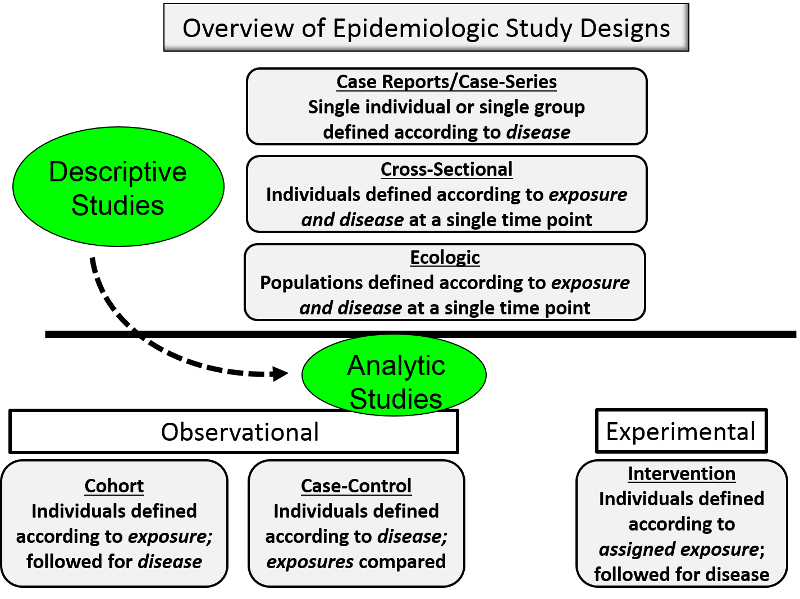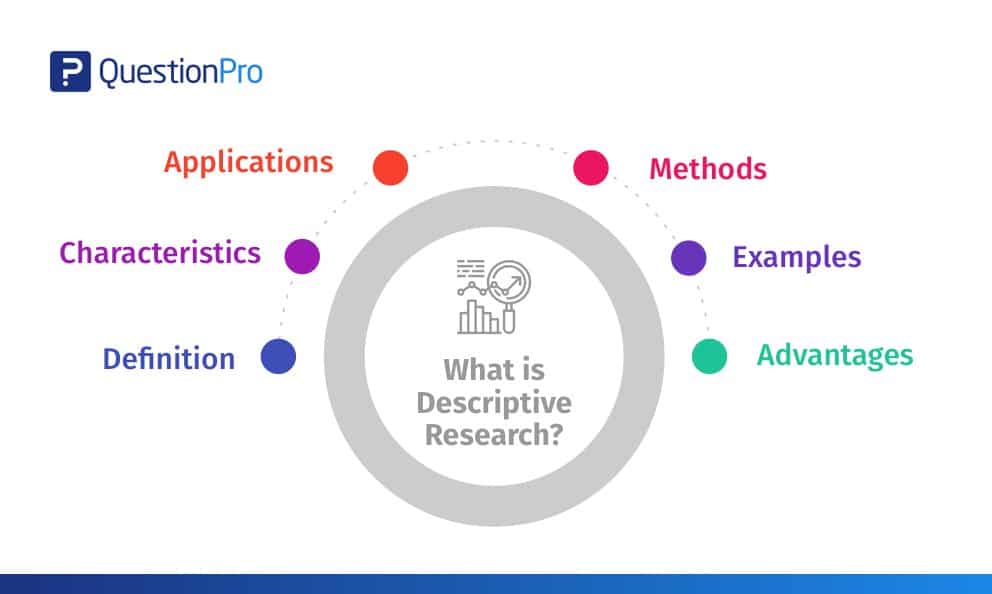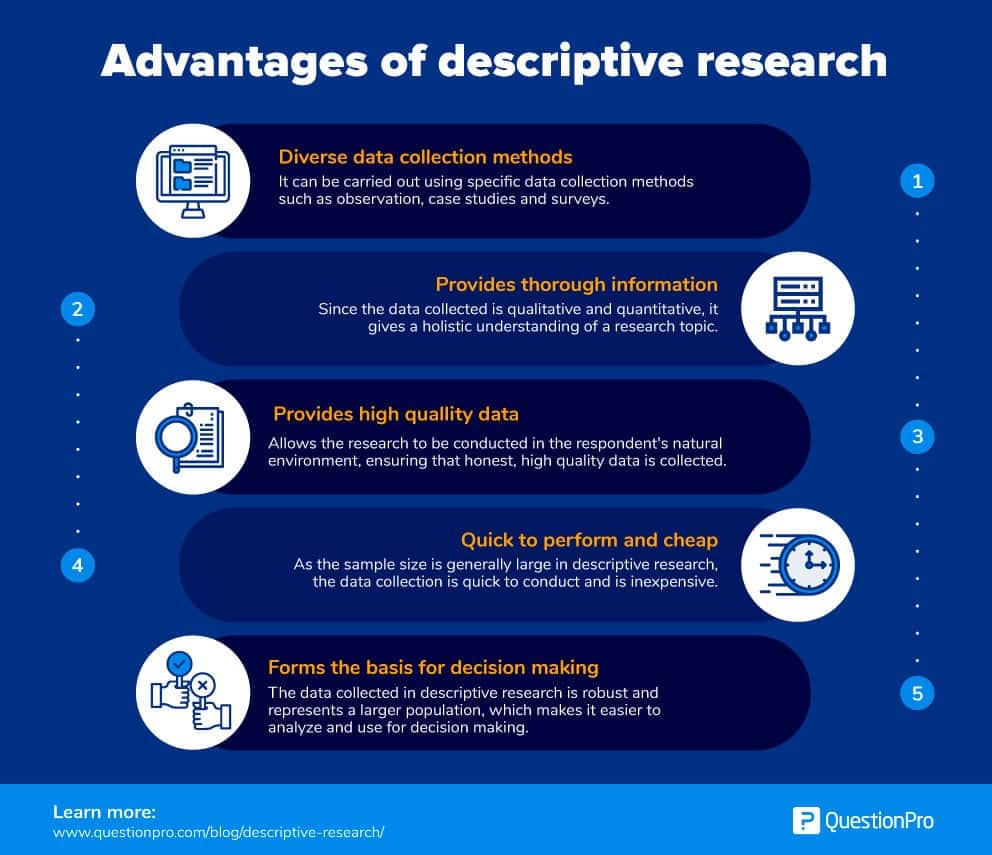Describe Uses Strengths Limitations of Descriptive Study Designs
Thus descriptive research is used to provide a relatively complete understanding of what is currently happening. In the next sections a review of literature the importance of the study and the questions of the study are presented.

Module 4 Epidemiologic Study Designs 1
Hypothesis Formulation Characteristics of Person Place and Time Descriptive epidemiology searches for patterns by examining characteristics of person place time.

. Some of the descriptive design strengths include that it can provide an examination of the issue we want to investigate It also gives the opportunity to conduct new researches and formulate hypotheses regarding the cause and effect as well as the relationship between variables Sumeracki 2021. Characteristics age sex occupation of the individuals affected by the outcome Place. Research studies that do not test specific relationships between variables are called descriptive or qualitative studies.
The first step in summarizing the research design whether in the Introduction or within a research design section is to say why you did what you did. Correlational designs also have the advantage of allowing the researcher to study behaviour as it occurs in everyday life. Learn vocabulary terms and more with flashcards games and other study tools.
This article discusses the subtypes of descriptive study design and their strengths and limitations. In sum correlational research designs have both strengths and limitations. Strengths of case control studies.
Descriptive studies that examine individuals can take the form of case reports a report of a single case of an unusual disease or association case series a description of several similar cases and cross-sectional studies. Study is to evaluate the strengths and weaknesses of the descriptive evaluation from the point of view of teachers principals and experts in Chaharmahal and Bakhtiari. These studies are used to describe general or specific behaviors and attributes that are observed and measured.
No manipulation of variables. Descriptive studies that examine populations or groups as the unit of observation are known as ecological studies. Descriptive and Analytic Studies.
Since the design of a study can affect the validity of its results it is important to understand the different types of study designs and their strengths and limitations. Descriptive including ecological studies are generally relatively quick easy and cheap to conduct. It allows the researcher to study and describe the distribution of one or more variables without regard to any causal or other hypotheses.
Because most organizations collect and analyze quantitative data they dont always know exactly how a target market feels and what it wants. An innovative research tool descriptive research is used by researchers as an opportunity to fuse both quantitative and qualitative data to reconstruct the what is of a topic. On the other hand there are some disadvantages of descriptive research.
Geography residence work hospital of the affected individuals Time. In-depth analysis and systematic description of one patient or one group of similar patients. Describe distribution of disease and generate hypothesis.
Descriptive Research DesignCase Study. Take into account the sampling measurement. Particular strengths of ecological studies include.
Start studying Study design. Exposure data often only available at area level. Found in Health Services Research.
What youll learn to do. As evidence to support or invalidate. The first disadvantage is that descriptive research requires more skills.
Common in nursing 40-50 years ago but are now less frequent. Secondly response rate is low in this research. Theories to generate new hypotheses for testing.
10 Key Strengths and Limitations of Qualitative Research Qualitative research helps entrepreneurs and established companies understand the many factors that drive consumer behavior. Differences in exposure between areas may be bigger than at the individual level and so are more easily examined. Describe the design features of a cross-sectional study and describe their uses strengths and limitations.
Compared to exploratory and explanatory case study designs. Atieno 2009 looks to the strengths and weaknesses of qualitative research and discusses how those limitations can be overcome by the option of quantitative research methods. One strength is that they can be used when experimental research is not possible because the predictor variables cannot be manipulated.
Describe strengths and weaknesses of each of the studies in the articles as well as the sample designs. Of the various observational study designs the descriptive design is the simplest. The type of study design used to answer a particular research question is determined by the nature of question the goal of research and the availability of resources.
Descriptive research has advantages and disadvantages with researchers accounting for positive and negative variables. A natl study of efficiency for dialysis centers. When events diagnosis reporting.
Characterize who where or when in relation to what outcome Person. Thirdly descriptive research is less expensive and time consuming. Secondly descriptive research may collect the data from large geographical area.
Describe the strengths and weaknesses of descriptive experimental and correlational research If you think about the vast array of fields and topics covered in psychology you understand that in order to do psychological research there must be a diverse set of ways to gather data and perform experiments. The three main categories of psychological research are descriptive correlational and experimental research. Finally the methodology and results will be discussed.
Descriptive research is often referred to as hypothesis generating research Depending on the data collection method used descriptive studies can generate rich datasets on large and diverse samples. Despite these advantages descriptive research has a distinct disadvantage in that although it allows us to get an idea of what is. Descriptive research may identify areas in need of additional research and relationships between variables that require future study.
Propose potential remedies for the areas of weaknesses. Epidemiologic Study Designs Descriptive studies Seeks to measure the frequency of disease andor collect descriptive data on risk factors Analytic studies Tests a causal hypothesis about the etiology of disease Experimental studies Compares for example treatments. Strengths are that descriptive case study focuses on illuminating a phenomenon it does not be limited to a.

Characteristics Strengths And Weaknesses Of Study Designs Used In Download Table

Characteristics Strengths And Weaknesses Of Study Designs Used In Download Table

Characteristics Strengths And Weaknesses Of Study Designs Used In Download Table

Characteristics Strengths And Weaknesses Of Study Designs Used In Download Table

Descriptive Research Definition Characteristics Methods Examples And Advantages Questionpro

Descriptive Research Definition Characteristics Methods Examples And Advantages Questionpro

Strengths And Limitations Of The Case Control And Cohort Study Designs Download Table

Comments
Post a Comment